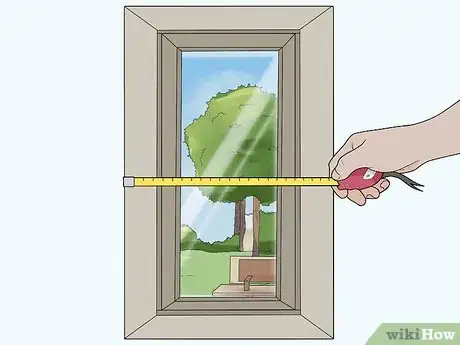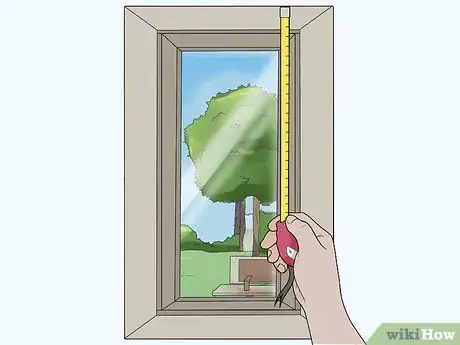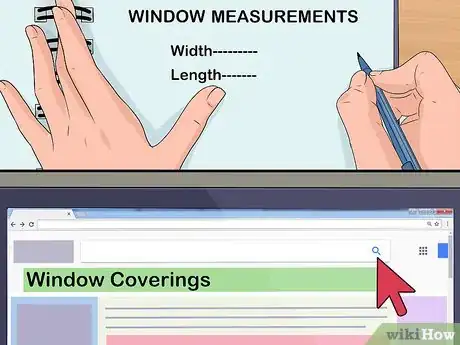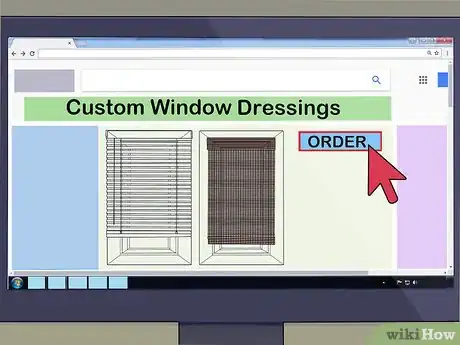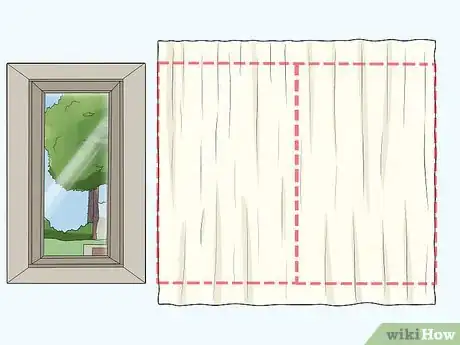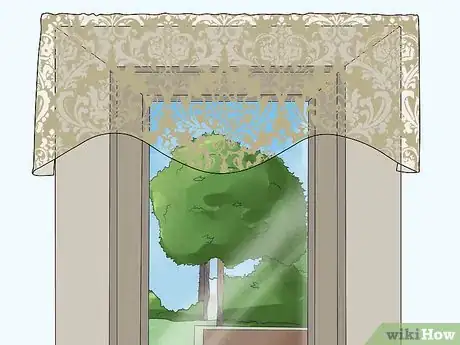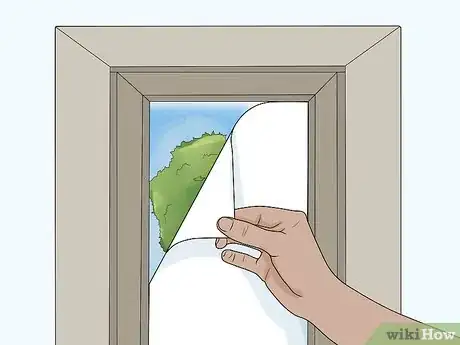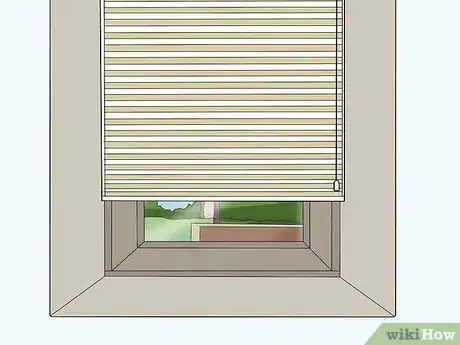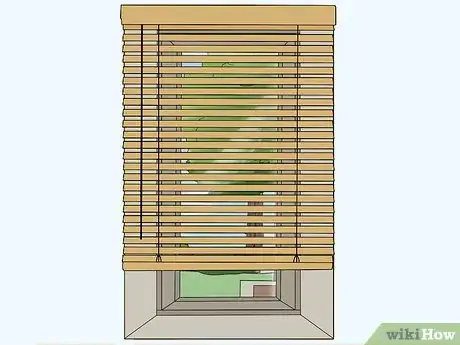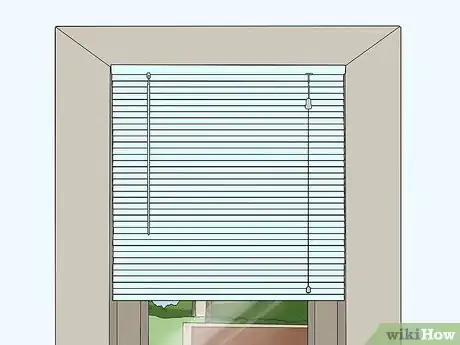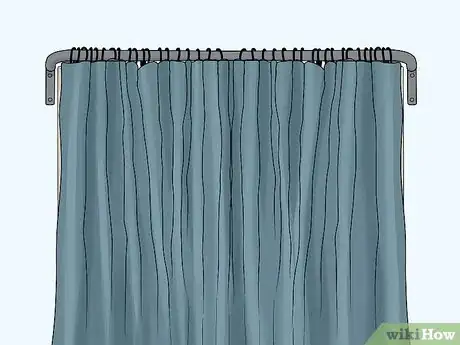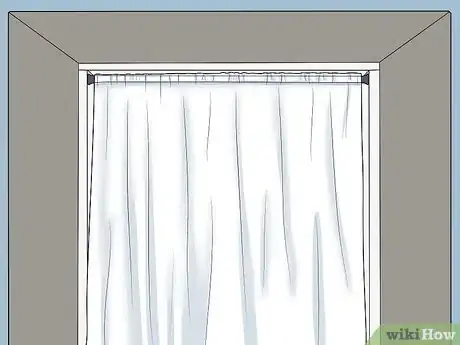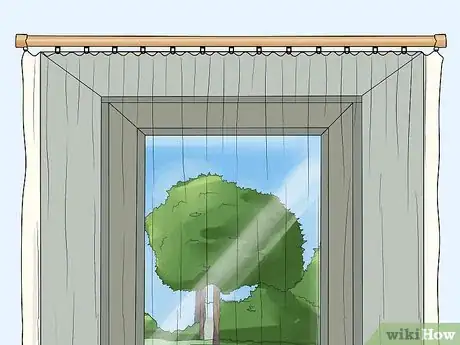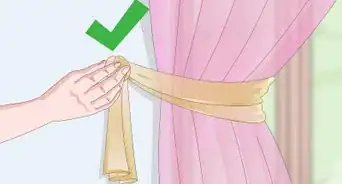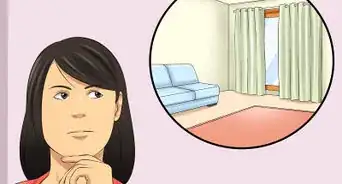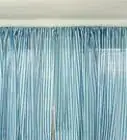This article was co-authored by Karen Parziale. Karen Parziale is a Home Stager, Home Organizer, and the Founder of The Real Estate Staging Studio based in Hoboken, New Jersey. Karen has over 15 years of home staging and decorating experience and has staged over 5,000 homes. She specializes in project management, space planning, material selections, and builder, architect, and client relationships.
There are 11 references cited in this article, which can be found at the bottom of the page.
This article has been viewed 35,034 times.
If you have narrow windows and are unsure of how to dress them, fret not! Simply measure your windows and choose between curtains, valances, swags, blinds, or shades. In addition, choose to use classic, tension, or return curtain rods. You can easily dress narrow windows, whether you are matching your window dressing to the look of your room or using them for a particular function.
Steps
Measuring Narrow Windows
-
1Measure the window horizontally to determine the width. Hold your tape measure at the left side of your window, then stretch it across until it reaches the right side. Ensure the left side measurement starts at 0.[1]
- Measure width of the inside trim of your window if you are planning to get blinds
-
2Measure the window vertically to determine the length.[2] Hold the tape measure at the very top of your window, and pull it downwards until you reach the bottom. This gives you the total length of your windows.[3]
- If you want to dress your windows with curtains, measure from the top of your windows to the floor so you know how long your curtains should be.
- Use a ladder or step stool if you need help reaching your windows.
- Measure the entire height of your wall if you plan on hanging curtains from the top.
Advertisement -
3Use the measurements to search for window coverings. You can search online or in stores to find window coverings that will fit your narrow windows. Choose from curtains, blinds, or shades.
- Keep in mind that it may be difficult to find the right size window coverings for your narrow windows in store or online.
- Go to a home goods store to see if anyone is available to help you choose the right window treatment.
- Get crafty if you have a unique or very narrow window. You may choose to only use 1 curtain panel or cut and sew your own treatment.
-
4Order custom window dressings if you can't find the right size.[4] If you do not find an option you like in the correct size, you may have to order custom window dressings. Consult your local home supply store, or go online and search for “custom window dressings.” With either option, you can easily pick out curtains, blinds, and rods in a custom size.[5]
- Discuss what function you want your dressings to have with the employee. Mention any color or material preferences as well.
- Custom window dressings can get expensive, so tell the employees your budget ahead of time.
- Look for online tutorials or free classes at local craft stores to learn how to make your own window treatments on a budget!
Choosing Narrow Window Coverings
-
1Get curtains twice your window's width to make them look more full. You want to make your narrow windows look as full as possible. To do this, double the width of your window when selecting a curtain size.[6]
- If you don't intend on shutting a window often, you can use curtains that are 1 and a half times the width instead.
- Hang the curtains 6 to 12 inches (15 to 30 cm) higher than the window's trim to make it look larger.
-
2Use a valance if want your windows to look open and spacious. Curtains can easily weigh down narrow windows, especially if they are made out of thick, bulky fabric. To avoid this, choose a valance instead. A valance is a small piece of fabric that hangs across the top of the window. They add softness, color, and pattern to your space without covering up too much of the window.[7]
- These are purely decorative, so go with a longer curtain if you want to block out light.
- Valances look great in kitchens, bathrooms, and dining rooms, for example.
- Select a box-pleated valance if you want to add some interest.
- In addition, you can use a swag if you want a light, decorative touch. A swag is a fabric strip that is draped over a rod or tieback. The middle of the fabric acts as a valance, while the ends hang down on either side of the window.
- Valences can date the space, so choose a modern and fun material if you choose to make one.
-
3Try an opaque window film if you want a non-permanent covering. This is an affordable option that works well if you can't hang permanent window fixtures. Window film is available in a variety of sizes and textures, and you can purchase it at most home supply stores or online. Select a small size, and you can easily cover your narrow windows.[8]
- To install window film, simply pull off the backing and stick it to your window.
- Buy tinted window film to prevent light from coming through or for privacy.
-
4Go with white pleated or cellular shades for a versatile blind option. Pleated shades are made from layers of fabric, and they add texture to the room. Cellular shades create a barrier between the window and the room, great for blocking out light. Both of these options come in a wide variety of sizes, colors, and opacity. In addition, they come in small widths so you can easily fit them for narrow windows.[9]
- Pleated shades start at 8 inches (20 cm) wide and can get as tall as 96 inches (240 cm) wide.
- Cellular shade varieties start at 6 inches (15 cm) wide, and you can find them as tall as 12 feet (3.7 m) tall.
- Use thinner blinds instead of thick ones. Thicker blinds will make your window seem even smaller.
-
5Choose wooden or faux wood blinds if you want a modern, warm style. This is a popular blind choice that looks great with tall, narrow windows, and 1 inch (2.5 cm) wooden blinds look particularly attractive. You can easily open or tilt them, and their small profile creates a slim look so your windows won't look bulky.[10]
- In addition, you can get custom bamboo blinds if you'd like a unique option for your narrow windows.
- Wooden blinds start at 7 inches (18 cm) wide.
-
6Select roman shades if you want an elegant, romantic window style. Roman shades stack up evenly when opened, and they block out the light well. Their soft appearance adds a bit of luxury to the room. With this option, your windows must be at least 12 inches (30 cm) wide.[11]
- Roman shades come in a variety of materials, including woven and bamboo for more modern spaces.
- You can select a rich, elegant curtain fabric to pair with this window covering.
- These look particularly great if you have wide, narrow windows rather than tall, narrow windows.
-
7Opt for mini blinds if you want an affordable window dressing option. While narrow windows look great dressed with other coverings, mini blinds are an inexpensive option that works with small-framed windows. You can choose from a wide variety of colors, though white is the most popular.[12]
- Mini blinds start at 6 inches (15 cm) wide, and you can find them up to 10 feet (3.0 m) long.
Selecting Curtain Rods for Narrow Windows
-
1Select a classic rod with a decorative end cap for a polished look. Classic curtain rods are on an adjustable pole, and you can pick out a decorative end cap that matches your room. Classic rods attach to the wall with brackets and are completely straight across.[13]
- Because they are straight, this is a good option for narrow windows.
- The decorative end cap adds a bit of personalization to your window dressings.
- Alternatively, choose a classic rod with a simple or plain end cap. Do this if you don't want to add emphasis to your windows.
- Don't dwarf the window with a thick decorative rod. Find something simple and small.
-
2Go with a return curtain rod if you want to block out the light. Return rods are adjustable, U-shaped rods that screw directly into the wall. These are an attractive choice for narrow windows since the bar is not very thick and straight across. The return rod reaches past your windows, so they can easily block out light.[14]
- This is a good choice if you have narrow windows in your bedroom or bathroom, for example.
-
3Use a tension rod if you want an affordable option. Tension rods easily adjust to fit inside a window frame without the use of hardware. However, they are the least sturdy window covering. Use these for lightweight curtains, valances, or swags.[15]
- These are the most inexpensive curtain rod types. If you are on a budget, go with a tension rod.
- Pick tension rods for apartments or rental spaces where you may not be allowed to drill into the wall.
-
4Avoid using track rods when dressing narrow windows. Track rods have drapery hooks attached to pulleys inside the rod. These are helpful when opening and closing windows often, but they can add bulk to the top of your narrow windows. To keep things streamlined, choose another curtain rod option for your windows.[16]
- Track rods enable curtains to effortlessly glide across the top.
Warnings
- Avoid using track rods when dressing narrow windows. Track rods have drapery hooks attached to pulleys inside the rod. These are helpful when opening and closing windows often, but they can add bulk to the top of your narrow windows.⧼thumbs_response⧽
- Be careful with blinds that have long cords. They can be a risk to small children and pets. Use cordless or magnetic blinds for a safer option.⧼thumbs_response⧽
Things You'll Need
- Measuring tape
- Curtains
- Curtain rod
- Valance or swag
- Blinds or shades
- Hardware
- Ladder
References
- ↑ https://youtu.be/TcorGZoVNCg?t=46s
- ↑ Karen Parziale. Home Stager & Interior Designer. Expert Interview 21 April 2020.
- ↑ https://youtu.be/TcorGZoVNCg?t=46s
- ↑ Karen Parziale. Home Stager & Interior Designer. Expert Interview 21 April 2020.
- ↑ https://www.apartmenttherapy.com/good-question-window-coverings-73078
- ↑ https://www.bhg.com/decorating/window-treatments/basics/single-window-treatment-ideas/?slideId=9ad4a074-16e6-4d12-a603-034490e24cd2
- ↑ https://www.bhg.com/decorating/window-treatments/basics/window-treatment-styles/?slideId=20e5e1ba-0b8f-46b4-83c6-ee656072aee3
- ↑ https://www.apartmenttherapy.com/good-question-window-coverings-73078
- ↑ https://www.youtube.com/watch?v=1Ks6rmFFk3o
- ↑ https://www.blindsgalore.com/blog/index.php/exhibitions/how-to-treat-tall-and-skinny-windows/
- ↑ https://www.housebeautiful.com/uk/decorate/windows/a218/measuring-choosing-window-blinds/
- ↑ https://www.youtube.com/watch?v=FNc6GMo9kdo
- ↑ https://unskinnyboppy.com/curtain-solutions-for-small-windows/
- ↑ https://www.realsimple.com/home-organizing/decorating/curtains-window-treatments#type-rod
- ↑ https://www.realsimple.com/home-organizing/decorating/curtains-window-treatments#type-rod
- ↑ https://www.realsimple.com/home-organizing/decorating/curtains-window-treatments#type-rod
